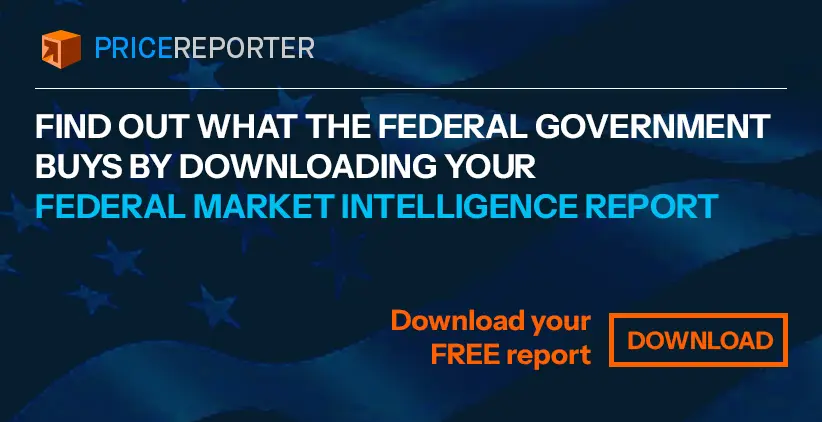For years, a prevailing myth has persisted: that GSA Multiple Award Schedule (MAS) contracts are the exclusive domain of large corporations. This misconception has deterred many small businesses from exploring the vast opportunities within federal procurement. However, recent data emphatically debunks this notion, revealing a landscape rich with prospects for small enterprises.
- Small Businesses Are Not Just Welcome — They Are Prioritized
- GSA Schedule Registration Is Complex, but Streamlined in 2025
- How to Get a GSA Schedule: Updated Step-by-Step
- What Is a GSA Schedule Number — and Why It Matters
- You Don’t Have to Do It Alone: Help Is Available
- Conclusion
- Frequently Asked Questions: Small Business and the GSA Schedule
In Fiscal Year (FY) 2024, the GSA MAS program achieved over $51.9 billion in contract sales, marking an 11% increase from the previous year. Notably, approximately 35% of these sales—equating to around $18.2 billion—were awarded to small businesses. This significant share underscores the federal government’s commitment to integrating small businesses into its procurement processes.
The GSA’s dedication is further evidenced by its performance metrics. In FY 2024, 35.84% of GSA’s MAS spending and 42.10% of its prime contract dollars were allocated to small businesses, surpassing established targets. These figures highlight the agency’s proactive efforts to foster small business participation.
Moreover, the GSA’s Office of Small and Disadvantaged Business Utilization (OSDBU) has been instrumental in this endeavor. Through initiatives like the “Small Business Works” event, OSDBU facilitated matchmaking sessions, connecting 60 prime vendors with 60 small businesses, thereby enhancing collaboration and contract opportunities.
The GSA MAS program’s structure inherently supports small businesses. With approximately 14,315 companies holding MAS contracts in FY 2024, a significant portion comprises small enterprises. These businesses benefit from streamlined procurement processes, pre-negotiated pricing, and access to a vast federal customer base.
In summary, the narrative that GSA MAS contracts are reserved for large corporations is outdated. The federal procurement landscape is evolving, with small businesses playing an increasingly vital role. By leveraging the resources and opportunities provided by the GSA, small enterprises can not only participate but thrive in the federal marketplace.
Small Businesses Are Not Just Welcome — They Are Prioritized
The federal government isn’t just open to working with small businesses; it’s actively required to do so. Each year, 23% of all prime federal contracting dollars are legally mandated to be awarded to small businesses. In practice, that number is often exceeded.
In Fiscal Year 2023, small businesses were awarded over $160 billion in federal contracts across all agencies. Within the General Services Administration’s Multiple Award Schedule (MAS) program specifically, more than $18 billion in sales flowed through small business contracts. This shows not only compliance with federal policy but also strong agency-level commitment to supporting smaller enterprises.
Many agencies had exceeded their small business goals. For example:
- The Department of Homeland Security awarded nearly 36% of its prime contracting dollars to small businesses.
- The Department of Veterans Affairs regularly surpasses its goals in Service-Disabled Veteran-Owned Small Business (SDVOSB) spending.
- The GSA itself awarded over 42% of its prime contract dollars to small businesses in FY2024, well above the 23% target.
This emphasis is reinforced through various set-aside programs, where certain contracts are reserved exclusively for specific types of small businesses, such as:
- Women-Owned Small Businesses (WOSB)
- HUBZone-certified businesses
- 8(a) Small Disadvantaged Businesses
- Service-Disabled Veteran-Owned Small Businesses (SDVOSB)
These designations reduce competition from large firms and increase your chances of winning contracts.
But how do you know if your business qualifies as “small”?
The Small Business Administration (SBA) defines small businesses based on NAICS codes (North American Industry Classification System), which categorize your business by industry. Each NAICS code comes with a size standard, usually based on either average annual revenue or number of employees. For instance:
- A technology consulting firm might qualify as small if it earns less than $34 million annually.
- A manufacturing company might need to stay under 500 employees.
To check if your business qualifies, you can use the SBA Size Standards Tool, which allows you to enter your NAICS code and instantly determine whether you meet the current threshold.
Understanding and leveraging your small business status isn’t just a formality — it’s a strategic advantage. It opens doors to funding, visibility, and government contracts that larger competitors simply can’t access.
GSA Schedule Registration Is Complex, but Streamlined in 2025
Getting onto the GSA Schedule as a small business can be a challenging process — but in 2025, it’s far more manageable than ever before thanks to a suite of digital tools and streamlined federal systems.
The General Services Administration has modernized its vendor onboarding with platforms like GSA eOffer/eMod, which allow you to submit and modify offers electronically, and provides automated checks that reduce the risk of common errors. Combined with mandatory online training, these resources make the registration process more transparent and efficient than in years past.
Here’s a simplified walkthrough of the key steps you need to complete before submitting a GSA Schedule offer:
Register Your Business in SAM.gov
SAM.gov (System for Award Management) is the federal government’s central contractor database. You must register your business there to be eligible for any federal contracting — not just GSA Schedules.
During this process, you’ll provide business details, ownership structure, and representations & certifications required by federal law.
Obtain a Unique Entity Identifier (UEI)
As of April 2022, the DUNS number has been officially retired. The UEI is now the standard identifier for all businesses working with the federal government. You’ll receive your UEI automatically as part of your SAM.gov registration.
Choose the Right NAICS Codes
You will need to select the appropriate North American Industry Classification System (NAICS) codes that describe the products or services you offer. These codes determine how the government classifies your business and whether you qualify as a small business under SBA size standards.
Choosing the correct NAICS codes is critical because they directly influence your eligibility for small business set-asides and other targeted programs.
Complete the Required GSA Pathways to Success Training
Before submitting an offer, GSA requires that you complete their “Pathways to Success” training. This online course explains what it means to become a GSA contractor, how the MAS program works, what your obligations will be, and how to maintain compliance once awarded.
This training ensures that vendors are fully prepared to work with the government and understand their long-term responsibilities under the contract.
For additional resources and guidance throughout the process, vendors should rely on the official Vendor Support Center (VSC). The VSC offers up-to-date policy information, templates, FAQs, and direct access to system tools like eOffer.
How to Get a GSA Schedule: Updated Step-by-Step
Once you have registered your business in federal systems and completed the required training, you are ready to move on to the core of the process: submitting a GSA Schedule offer. Here’s a refined, step-by-step guide focused on the practical execution of your application.
Step 1: Confirm Eligibility & Preparation
Before preparing your proposal, make sure:
- Your SAM.gov registration is active and accurate.
- You have a UEI assigned (not DUNS).
- Your selected NAICS codes align with your offerings.
- You’ve completed the GSA “Pathways to Success” training.
Also, check that your business meets small business size standards for your NAICS code using SBA’s Size Standards Tool.
Step 2: Identify the Correct Large Category & SINs
The MAS program is now structured into Large Categories (e.g., IT, Facilities, Professional Services), each with Special Item Numbers (SINs) that define specific offerings. You’ll need to:
- Map your products/services to the correct SINs.
- Review the Solicitation Attachments for that SIN — each one may have unique technical, pricing, or compliance requirements.
Use the GSA eLibrary to explore SINs and Large Categories by keyword, industry, or NAICS.
Step 3: Build Your Offer Package
This is where many small businesses face the biggest hurdles. A strong offer must include:
- Price Proposal (Commercial Sales Practices + Price Narrative):
- Show that your proposed prices are fair and reasonable.
- If offering discounts to commercial customers, explain your basis of award (BOA).
- Be ready to negotiate pricing with the contracting officer.
- Technical Proposal:
- Varies by SIN, but often includes project narratives, labor category descriptions, and quality assurance plans.
- Terms & Conditions:
- Complete the required templates, including representations & certifications, subcontracting plans (if applicable), and past performance.
- Financial Documentation:
- Submit at least two years of financials, or a balance sheet if you’re a newer business.
- Past Performance Evidence:
- Provide CPARS reports, customer references, or open ratings reports to demonstrate reliability.
Pro tip: Review the MAS Solicitation (47QSMD20R0001) in SAM.gov carefully for full offer requirements and templates.
Step 4: Submit via GSA eOffer
Once your documents are complete and compliant:
- Create a digital certificate to access the eOffer system.
- Upload all documentation, double-check for missing fields or mismatches.
- System will validate the input and help flag errors before submission.
Step 5: Respond to Clarifications & Negotiations
After submission, your offer will be reviewed by a GSA contracting officer (CO). They may request:
- Clarifications on technical details.
- Revisions to pricing.
- Additional documentation or certifications.
Expect this phase to take 30–120 days, depending on complexity and workload.
A polished offer takes time, but careful attention to detail and clear documentation can greatly increase your chances of approval, and unlock access to a multi-billion-dollar marketplace.
What Is a GSA Schedule Number — and Why It Matters
When your company is awarded a GSA MAS contract, it receives a GSA Schedule Number, also referred to as a contract number, typically formatted as 47QRAA##D####. While this number uniquely identifies your awarded contract, it’s only part of the picture.
To fully understand your place within the GSA MAS program, you also need to know your assigned Large Categories and Special Item Numbers (SINs), which define the segment(s) within which you are authorized to offer your product and/or services.
Key Terms Explained
| Term | Definition |
| GSA Schedule Number | A unique contract number issued upon award of a MAS contract. |
| Large Category | A high-level grouping of related products and services (e.g., IT, Professional Services). |
| Special Item Number (SIN) | A more specific classification within each Large Category that describes the exact services or products you offer. Each SIN has its own scope and requirements. |
Example: What Your GSA Contract Might Look Like
| Component | Example |
| Contract Number | 47QRAA25D0012 |
| Company Name | ABC Tech Solutions LLC |
| Large Category | Information Technology |
| Awarded SIN(s) | 54151S – IT Professional Services |
| Contract Start Date | April 1, 2025 |
| Contract End Date | March 31, 2030 |
| Contract Vehicle | GSA Multiple Award Schedule (MAS) |
You can view your contract listing or find others through the GSA eLibrary by searching by name, UEI, or NAICS.
Top MAS Categories for Small Businesses (FY2024 Data)
The table below shows the most active GSA MAS Large Categories for small businesses based on contract sales, along with popular SINs under each:
| Large Category | FY2024 Small Business Sales | Popular SINs | Common Services/Products |
| Information Technology | $4.2 Billion | 54151S, 518210C, 54151HEAL | IT consulting, cloud services, health IT |
| Professional Services | $2.0 Billion | 541611, 541330ENG, 541219 | Management consulting, engineering, financial audits |
| Industrial Products & Services | $652 Million | 333924, 325998W, 332510C | Warehouse equipment, chemicals, tools |
| Facilities & Construction | $442 Million | 561210FAC, 238220, 541690E | Facility ops, HVAC, environmental services |
| Transportation & Logistics | $410 Million | 485999, 492110, 541614SVC | Freight, logistics consulting, vehicle leasing |
| Office Management | $347 Million | 339940, 541513 | Office supplies, managed services |
| Human Capital | $321 Million | 561320SBSA, 611430 | Staffing, training, workforce development |
Note: SINs represent service/product categories and must be selected accurately during proposal preparation.
Why This Structure Matters
- Buyers search by SIN, not just by company name. Being listed under the right SIN boosts your visibility.
- Each SIN has pricing expectations, compliance terms, and specific eligibility; these must be matched in order to qualify.
- GSA Schedule Number + SINs = Your Public Profile. This combination defines what you can sell and at what rates, to all federal agencies.
Understanding and using this structure to your advantage is critical to successful pursuit of federal business opportunities. Don’t just get a contract; get the right one with the right visibility.
You Don’t Have to Do It Alone: Help Is Available
Navigating the GSA Schedule process can feel overwhelming, especially for small businesses without in-house legal or compliance departments. The good news? You don’t have to do it alone. A wide network of free and paid support resources exists to guide you through every stage of your GSA journey, from registration to contract performance.
GSA OSDBU – Advocacy Inside the System
Every federal agency has an Office of Small and Disadvantaged Business Utilization (OSDBU), with the GSA OSDBU being one of the most active. Their mission is to help small, minority-owned, woman-owned, and veteran-owned businesses succeed in federal contracting.
Through outreach events, matchmaking sessions, and training webinars, GSA OSDBU creates direct connections between small businesses and federal buyers. Their annual “Small Business Works” event is a must-attend for new vendors.
SBA Mentor-Protégé Program and Joint Ventures
The SBA All Small Mentor-Protégé Program (ASMPP) allows small businesses to partner with more experienced (and often larger) government contractors for:
- Business development support
- Technical guidance
- Shared bidding through Joint Ventures (JVs)
These partnerships enable small businesses to bid on larger contracts, gain experience, and even compete in set-aside opportunities together — as long as the JV meets SBA requirements.
Subcontracting & Contractor Team Arrangements (CTAs)
Can’t yet win a prime contract? You can still get in the game:
- Subcontracting with larger GSA prime contractors allows small firms to gain past performance and build relationships. Start by browsing the GSA Subcontracting Directory to find prime vendors in your field.
- Contractor Team Arrangements (CTAs) allow two or more GSA Schedule holders to jointly respond to an RFQ, even if neither one qualifies alone. This enables you to offer a complete solution to buyers and access new opportunities without taking on the entire burden.
GSA Consultants – When It Pays to Have a Guide
For some businesses, it makes sense to bring in outside expertise. GSA consultants can:
- Guide you through every document in your offer package
- Help determine optimal pricing and SIN strategy
- Communicate with GSA contracting officers on your behalf
- Support modifications and compliance after award
At Price Reporter, we’ve helped hundreds of small businesses successfully secure and manage their GSA MAS contracts. Whether you’re applying for the first time or expanding into a new category, our team can help ensure your submission is accurate, compliant, and competitive.
Getting a GSA Schedule is a strategic investment. And like any major milestone, it’s easier with the right support. From government-backed advisors to private-sector experts, the tools are in place to help your small business succeed in the federal marketplace.
Conclusion
The federal marketplace is full of opportunities, and small businesses are not just allowed but rather encouraged to take part. Through the GSA Multiple Award Schedule, your business can gain direct access to government buyers, long-term contracts, and steady revenue. The process may be detailed, but it’s entirely achievable with the right strategy and support.
At Price Reporter, we have spent nearly two decades helping small businesses successfully navigate the GSA landscape. With over 1,000 GSA contracts under management and a client-first philosophy, we know what it takes to build, win, and sustain success in the federal sector. From first-time applicants to long-standing contractors, our experts are here to help you at every stage.
Want help becoming a GSA contractor? Contact our team to get started.
Frequently Asked Questions: Small Business and the GSA Schedule
Can a small business really win federal contracts through the GSA?
Yes. In FY2024, over $18 billion in GSA MAS sales went to small businesses. With set-aside programs and targeted support, GSA actively prioritizes small business participation.
How long does it take to get on the GSA Schedule?
On average, the process can take 3 to 6 months, depending on how complete and accurate your offer is. Having expert help can significantly reduce delays.
What is the difference between a Large Category and a SIN?
A Large Category is a broad group of offerings (like IT or Professional Services), while a SIN (Special Item Number) defines the exact products or services you’re allowed to sell under your GSA contract.
Do I need prior government experience to apply for a GSA Schedule?
No, but you do need to show strong commercial past performance. Federal buyers want to see that you have performed successfully within the same industry segment(s) in the recent past, to be absolutely sure that you are technically qualified.
What if I’m not ready to be a GSA prime contractor?
You can still enter the federal market through subcontracting or Contractor Team Arrangements (CTAs). These options allow you to build experience and relationships without carrying the full contract burden.
Is getting outside help for GSA registration worth it?
For many small businesses — yes. Navigating the proposal, pricing, compliance, and documentation can be time-consuming. GSA consultants like Price Reporter help streamline the process and improve chances of approval.








